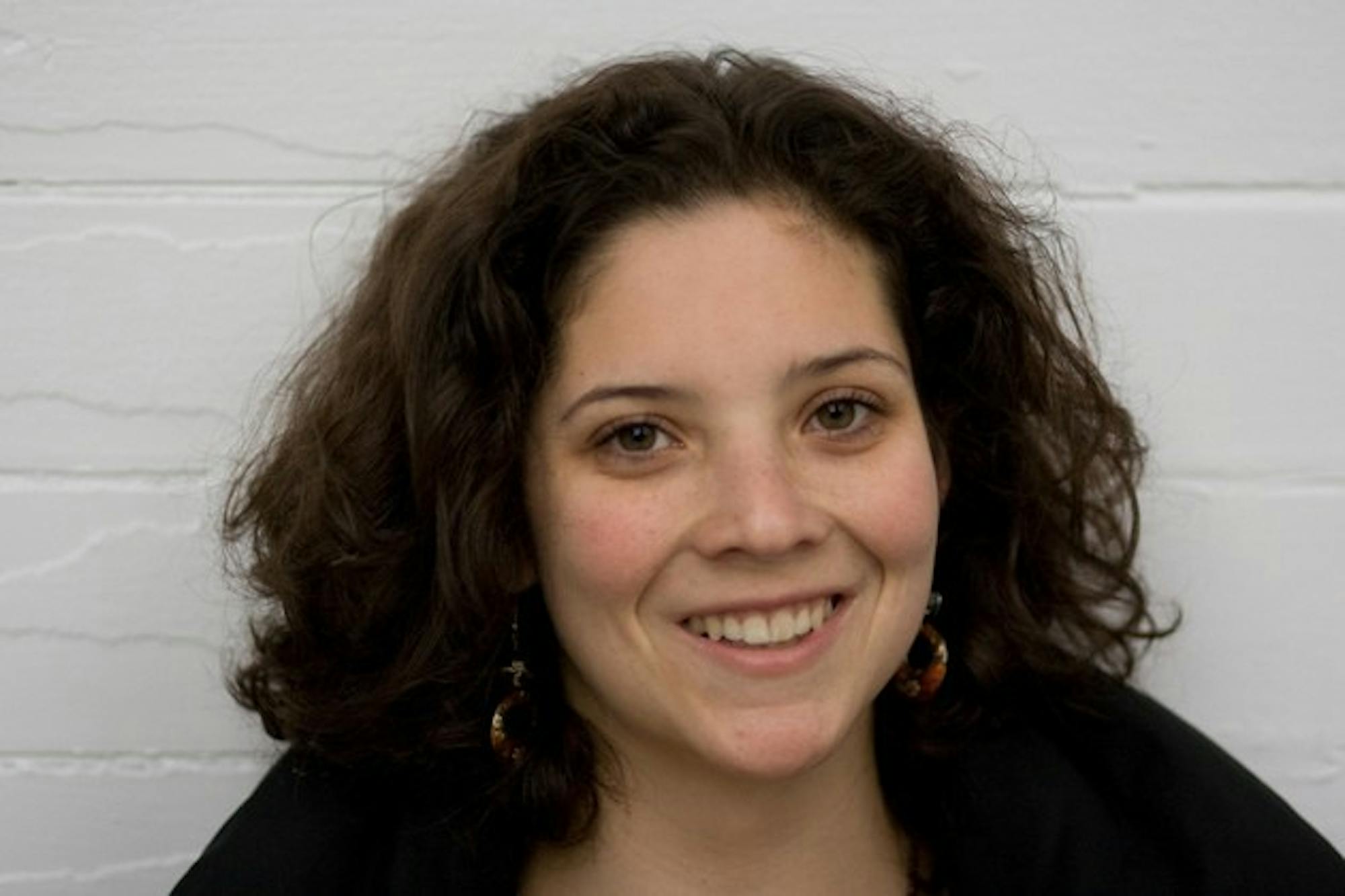When she was a child, Gabriela Collins-Fernandez '09 often brought her friends to New York museums for three- or four-hour playdates.
Now as an artist at Dartmouth, she rebels against the masters she admired in those days, stripping paintings down to their basic elements and piecing them back together in her work.
Collins-Fernandez '09, a candidate for honors in studio art, strives to redefine the medium of painting by separating the traditional elements such as oils, acrylics and finishings. She reconfigures these elements with unconventional techniques into something Collins-Fernandez's advisers describe as perceptive, engaging, thought-provoking, quiet and intense.
Collins-Fernandez's largest piece, which remains untitled, looks like cobwebs or thin fabric dangling on a Jackson Pollack painting.
She began with a matte medium surface, which is normally used as a finishing. She allowed the matte to dry before scraping off the translucent material with a razor and attaching it to a painted piece of cardboard.
"I wanted to look at the larger issues in painting because the colloquial idea of painting is taking a piece of paper and drawing on it," Collins-Fernandez said. "But this was a joke for myself, looking at what happens if you take a painting apart and put it back together."
Other pieces of her work use atypical media to form art. Just as emotional and personal, Collins-Fernandez retains her signature separation of a painting's elements, using cardboard instead of canvas.
These pieces border on the three-dimensional: The artist mounted flecks of bell pepper skins, rust, house paint and coffee beans onto pins, which she arranged in a pattern on painted cardboard. Collins-Fernandez described it as a comment on "organizational problems."
"The series of drawings or assemblages are made with materials such as coffee grounds, skins of dried acrylic paint, straight pins, thread, the skins of roasted red peppers and charcoal," studio art senior lecturer Enrico Riley,one of Collins-Fernandez's advisers, said.
"The works may appear random and chaotic, but they are quite ordered and intentional. I think her work is beautiful but not in a conventional kind of way," Riley said. Maybe they are beautiful -- like detritus being suspended and twirling in a tornado -- slow moving and poetic."
Not all of Collins-Fernandez's work, however, is experimental. She also demonstrates her breadth of technical skill by drawing larger-than-life sized portraits of her friends.
Here Collins-Fernandez shows her traditionalist side: To avoid using photographs for her portraits, she schedules several, long sittings with each of her subjects.
Collins-Fernandez, who attended the Bronx High School of Science in New York City, had no idea coming to Dartmouth that she would be a studio art major, but she was raised by parents who believed in exposing her to the arts from a young age.
"I always doodled, and I taught myself how to paint because I copied a lot of paintings onto T-shirts that I gave to my friends as gifts," she said.
This background came with her to Dartmouth, but Collins-Fernandez said she originally intended to study English and Spanish and "own the liberal arts."
"I never had professional training or took any art classes until Drawing I, my sophomore year here," she said.
Collins-Fernandez applies the methods used to study and analyze history and languages to her art.
"The way you look at history -- I look the same way at drawing," she said. "I think about the ends of the paper and that microcosmic space in between the charcoal and the paper."
This intellectualism has earned Collins-Fernandez praise from her other faculty adviser, studio art professor John Lee.
"Her art is obviously cerebral and intellectual as she has a feel for the materials that she uses and thinks a great deal about her works," he said.
"Her work seems to come from that very elusive connection between the mind and the body, which is a very hard thing to find," Lee said.
"Fortunately for us," he said. "No one works harder or more intensely than Gaby, so I am very sure that there is more, and even better, work to come."




